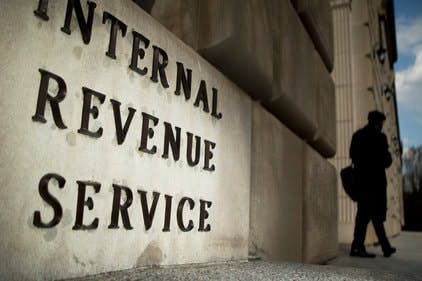Here Are Crucial Details About Withholding Compliance You Should Know
The Withholding Compliance Program analyzes wages and tax information on past W-2s to determine if individual taxpayers have had their taxes correctly withheld.

As payroll professionals know, an employee can change his or her W-4 whenever needed, especially when a major life event occurs. If an employee is reducing his or her number of allowances, that employee must report the change within 10 days by submitting a new W-4.
If the change is necessary for the current year, the employer must submit the revised document no later than the start of the first payroll period ending on or 30 days after an employee submits a revised W-4.
Sometimes, an employee files exempt on his or her W-4, meaning that employee has no tax liability for the preceding year and expects no tax liability for the upcoming year. Exempt forms like these expire on February 15, and an employer is not required to inform an employee to update his or her W-4, but it is generally conceived as best practice to do so. The only time an employer must tell an employee to fill out a W-4 is when that employee is first hired. If an employee fails to submit a W-4 at any time of his or her employment, employers are free to withhold their taxes as if that employee is single with no allowances.
In the past, the IRS required employers to routinely submit W-4s. But the IRS eliminated this rule to reduce paperwork intake. Now, an employer will only have to submit W-4s directly to the IRS if asked by written correspondence. Generally, this happens when the IRS suspects W-4 compliance isn’t being taken seriously. The IRS actively looks to ensure taxes are being paid correctly, compliantly, and fairly. Thus, they created the Withholding Compliance Program, and with it 'lock-in' letters.
Withholding Compliance Program
This program was created to help increase the effectiveness of IRS actions on under withheld tax compliance cases. The Withholding Compliance Program analyzes wages and tax information on past W-2s to determine if individual taxpayers have had their taxes correctly withheld. The goal of the program is to ensure employees are meeting their income tax obligations. When it is suspected an employee’s wages are being under withheld, the IRS will issue 'lock-in' letters in accordance with the Withholding Compliance Program.
What is a Lock-In Letter?
A 'lock-in' letter is a special order given to employers by the IRS that tells an employer to withhold taxes from an employee’s wages at a required minimum rate. That employer has 60 days after the letter is given to begin withholding at that specified rate. Withholding cannot be decreased after this point. If an employee wants to decrease his or her withholding allowances after being 'locked-in', that employee must submit the revised W-4 directly to the IRS for approval. Employees who have been locked in should be blocked from a company’s online portal for W-4s should one be available to them.
These are given when the IRS believes employees have consistently submitted incorrect W-4s, and the employer is taking compliance lightly. This usually has to occur for multiple years before a 'lock-in' letter is issued. The rate given in a 'lock-in' letter is Single, 0. Lock-in letters can be appealed. These appeals are time-sensitive, so moving swiftly in these situations is key.
The Withholding Compliance Program and subsequent 'lock-in' letters have shown success in the past. A study conducted by the Treasury Inspector General for Tax Administration, estimates the IRS collected an additional $192 in withheld income after issuing 13,044 'lock-in' letters to employers and taxpayers in 2006.
Keep reading: related insights
Guides and tools
Latest articles
Payroll Insights Newsletter
Subscribe to our quartely newsletter for exclusive payroll insights.
